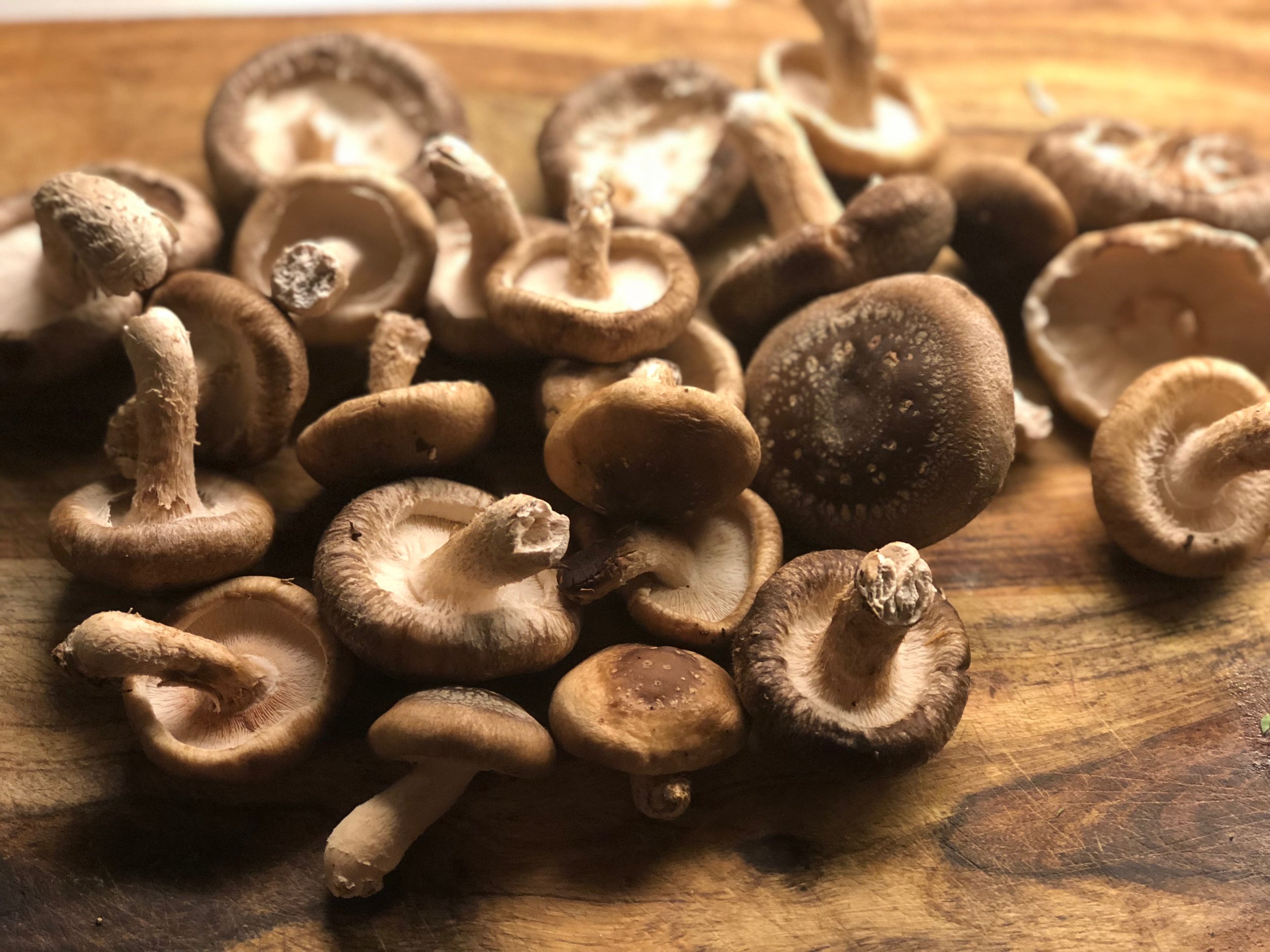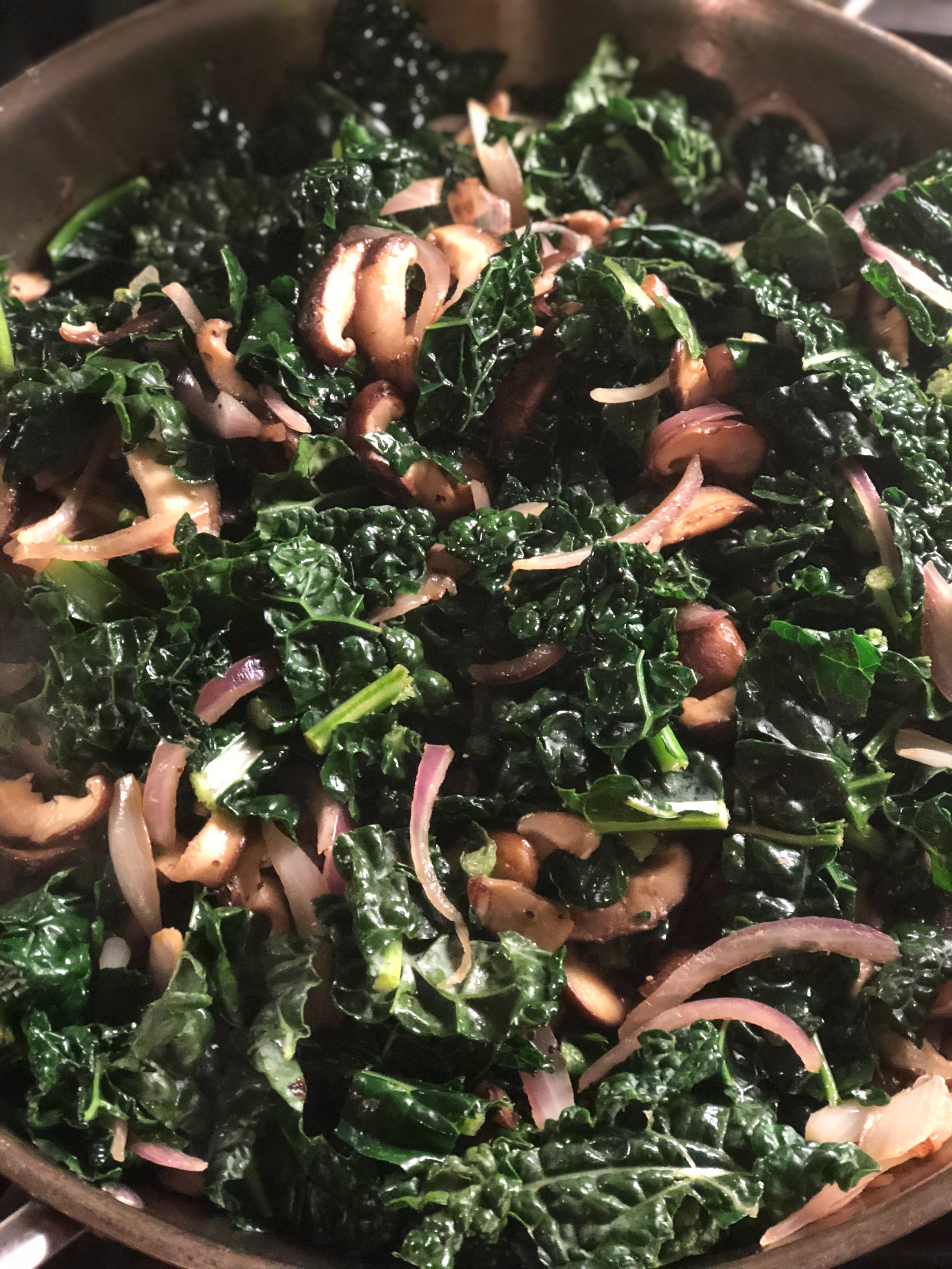I would like to make the case for Feasting.
Learning to Eat Freely is essential to my practice at H+D. Eating Freely means nourishing your body, not restricting yourself. Eating Freely means that you enjoy healthy food, and feel satisfied and comforted at the table.
Honestly, this is a difficult concept to grasp if your philosophy surrounding food is one of constant dieting. It is a mental shift that takes a lot re-training your thoughts surrounding food. I find that with my clients who have a history of chronic dieting, it is a huge breakthrough when they start thinking in terms of nourishing their bodies instead of restricting themselves. To make the shift from: “weight loss-is-achieved-by-eating-small-amounts-of-cold-and-flavorless-food”, to: “nourishing my body is enjoying delicious, whole foods so I feel satisfied”, takes time and mental effort, and support. (Check out my signature program - if your ready to transform your relationship with food and learn how to Eat Freely!)
One of the ways that I have found to help break this trapping, constant-dieting mindset, is by remembering how to FEAST.
Feasting is enjoying comforting, nutrient rich food, with people you love in an air of celebration - and it is so so healthy.
Healthy Feasting is possible when you know what you are hungry for, and know how to satisfy those cravings. This is possible by embracing the mindset that you can indulge in healthy food, by debunking the myth that some foods are terrible for you (grandma’s chocolate cake) and others are clean (that acai bowl from the juice bar down the street), and knowing which foods will nourish and strengthen your body. Healthy Feasting must be accompanied by restorative eating, and must not be confused with “cheating”.
Feasting is NOT:
Popping a handful of Dunkin’ donut holes in your mouth at your child’s classroom party, to distract you from the very loud and rambunctious children…
Stopping by Chick fil A for dinner, because you are too tired to cook tonight.
Ordering a salad at dinner with your co-workers, when what you really want is the Pasta, and slogging through eating it while being jealous of the other people’s warm meals.
Mindlessly eating ice cream out of the container after dinner, bc you want something sweet and then you forget that you also wanted to have self control.
Grabbing a handful of Oreos from your pantry bc they sound delicious… but then remembering that your body didn't need sugar and a belly ache, it needed protein, fiber and energy.
Ordering pizza or Chinese food for the third time this week, and then eating the leftovers the next day.
*This is CHEATING - cheating your body out of the nutrients that it needs.*
Feasting IS:
Enjoying a warm, freshly baked pastry from your fave shop - even more so if you are with a friend that makes you laugh :).
Making a pot of beef and turkey chili (or my H+D Vegan Chili), baking cornbread, and inviting the neighbors over to join you (or just eating it while watching a movie with your nearest and dearest).
Ordering what you want from the menu when you go out to dinner, remembering that what you want is to feel full, not stuffed - so maybe those cheese fries are not what you want after all, but the guacamole is!
Making your favorite holiday cookies and eating 2 of them with tea as an afternoon snack or an after dinner treat, so you feel warm & joyful.
Pouring yourself a glass of wine, an making yourself a nutrient rich green pizza - piled high with arugula, basil oil, lemon and parmesan cheese - in less time than it takes for the delivery guy to arrive, and eating it all :).
Feasting is a helpful to re-train our thoughts surrounding food, so we remember that enjoying and indulging is GOOD. If you nourish your physical body with rich food, while also nourishing your “soul” - then you will feel full instead of stuffed. Being able to celebrate in abundance with those we love is very healthy, after all.
There is so much more to nourishing your body than consuming superfoods, counting calories, and taking 1000 supplements. Health is holistic. Having a glass of wine and a bowl of pasta amongst friends and full of laughter, may be healthier for you tonight than a kale smoothie with flaxseeds. Yes?
Establishing a weekly rhythm of feasting is a practice that I recommend to all my clients. However, with the holiday season upon us, it is easy to find yourself with the opportunity to indulge multiple days a week… The strategy of establishing “boundaries” or “exercising sheer will power” can add stress and reduce enjoyment during this celebratory season. I think there is a better way.
By eating truly delicious whole foods, listening to our bodies, and finding motivation in the joy that comes from feeling good instead of gross - we can feel free to enjoy ourselves instead of stuffing ourselves.
To help all of you find the most joy at your Thanksgiving feasts, here are two of my favorite vegan side dishes (insert party emoji here :)).
This Stuffed Acorn Squash could also be served as a main dish!! And these Roasted Brussels with Balsamic glaze are honestly the best Brussels Sprouts I have ever had… and they will satisfy your sweet and savory cravings at the table whether you are vegan, Paleo, vegetarian, Keto, pescatarian, or striving to be an intuitive eater.
For the record, an “intuitive eater” is what I help my clients become. But more on that in December…
Bring one of these side dishes to your table this Holiday season, and feel FREE to indulge in them - and a generous piece of your mom’s famous chocolate cake too :).
Stuffed Acorn Squash
*serves 6-10
3 Acorn Squash
2 tbsp + 1 tbsp extra virgin olive oil
1 C quinoa
2 C veggie stock
4 C shiitake mushroom caps
1 red onion, sliced
1/2 C white wine
1 bunch dinosaur kale, leaves removed
2 small honey crisp apples
1 1/2 tbsp fresh sage, chopped
1/4 C blue or feta cheese crumbles (optional)
Preheat your oven to 425 degrees.
Cut squash in half, and scrape out the seeds with a large spoon. If serving as a main course - leave the squash in halves. If serving as a side dish, chop the squash into 4ths. Drizzle with 2 tbsp extra virgin olive oil, and rub the oil into the flesh of the squash with your hands. Transfer into the heated oven and roast for 30-40 minutes - until caramelized and soft.
Heat the veggie stock in a small pot, and add quinoa once boiling. Reduce heat to medium low, and simmer for 30 minutes until quinoa is cooked through. Fluff with a fork and set aside.
While squash is roasting and quinoa is cooking, slice your shiitake mushroom caps, and slice your onion. Remove the leaves from the kale stalks by running the leaves through your fingers and pulling the leaves off. Slice your apple thin, and into bite sized pieces. Chop the sage so that it is very small.
Heat 1 tbsp extra virgin olive oil in a large pan until hot. Add the mushrooms, and sauté until beginning to caramelize - about 5 minutes. Add onions, and sautee another 3 minutes. Add kale leaves and toss until kale turns bright green and begins to wilt (about 1 minute! This happens fast!), then add apples and sage and toss. Cook through for another 3 minutes, then add the cooked quinoa and toss.
Plate your squash, by filling each cavity with a generous scoop of the stuffing and topping with feta or blue cheese (if using.)
Enjoy!
Balsamic Glazed Brussels Sprouts
*serves 8-10
6 C (4 lb) Brussels Sprouts, halved
1/3 C pomegranate seeds
1/2 C balsamic vinegar
2 tsp brown sugar (or 2 tsp maple syrup)
salt and pepper
1-2 tbsp extra virgin olive oil
Preheat your oven to 425 degrees.
Chop your Brussels sprouts in half, and transfer to a foil lined baking sheet. Drizzle with extra virgin olive oil, season with salt and pepper, and toss. Roast in the oven for 20-25 minutes, until the sprouts are bright green and caramelized.
While sprouts are roasting, add balsamic vinegar, brown sugar or syrup, and a pinch of pepper to a small pot. Bring to a simmer on medium low heat, uncovered, and simmer for 15-20 minutes until the vinegar has reduced by almost half.
De-seed your pomegranate by cutting in half, and submerging in a bowl of water. Using your hands, break apart the pomegranate and remove the seeds while submerged under water. By separating the seeds from the pith while submerged, the seeds will sink to the bottom and the pith will float at the top! Remove the pith and discard.
Remove the Brussels from the oven and transfer to a serving dish. Add pomegranate seeds, and toss. Drizzle with the balsamic glaze.
Pile your plate high, and come back for seconds :).








